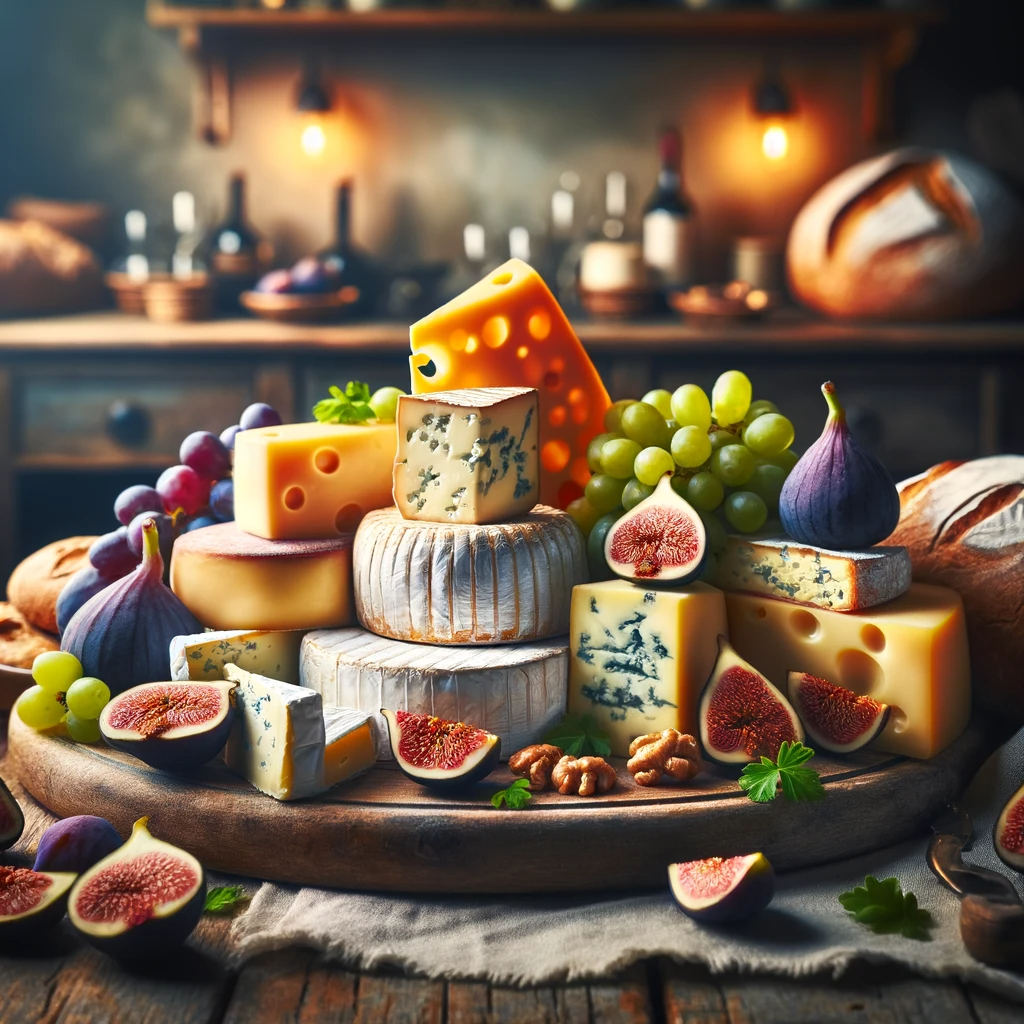Cheese, a beloved dairy product enjoyed by millions worldwide, has a rich and storied history that dates back thousands of years. From its humble beginnings to the diverse array of cheese varieties available today, this article will explore the fascinating journey of cheese ingredients from ancient times to modern-day creations.
Ancient Beginnings
Cheese-making can be traced back to the early civilizations of the Middle East and Mediterranean, around 6000 BC. The origins of cheese ingredients lie in the simple combination of milk, time, and ingenuity. Early cheese-makers discovered that when milk was left to sit in the warm climate of the region, it would naturally ferment and curdle, leading to the creation of the first cheese.
Milk as the Primary Ingredient
- Milk Variety: Initially, sheep and goat milk were the primary sources used for cheese production. Over time, cow’s milk also became a popular choice for its abundance and milder flavor.
- Natural Fermentation: Ancient cheese-makers relied on naturally occurring bacteria and enzymes present in milk to initiate the fermentation process. These microorganisms would transform milk into curds and whey.
- Coagulation: Coagulation, the process by which milk solidifies, played a pivotal role in cheese-making. Ancient cheese-makers used various coagulation agents, including plants like thistle and fig leaves, to curdle the milk.
Medieval Developments
As cheese-making techniques spread throughout Europe during the Middle Ages, the process became more refined, and different regions began to develop their own unique cheese varieties.
Cultural Influences
- Monasteries and Cheese Production: Monasteries played a significant role in preserving and advancing cheese-making knowledge during this period. Monks developed many famous European cheeses, such as Roquefort and Gouda.
- Geographic Variations: The diverse climates and landscapes of Europe led to the creation of region-specific cheeses. Alpine regions produced cheeses like Emmental, while the Mediterranean gave rise to feta and mozzarella.
Ingredients and Techniques
- Rennet: The discovery of rennet, an enzyme found in the stomachs of young mammals, revolutionized cheese-making. Rennet served as a more consistent and reliable coagulation agent, leading to greater cheese production.
- Aging Process: Aging cheese in caves and cellars became a common practice, allowing flavors to develop and mature. The ingredients used for aging, such as straw, wood, and leaves, influenced the final taste of the cheese.
Modern Innovations
The Industrial Revolution in the 18th and 19th centuries marked a significant turning point in cheese production. Technological advancements and globalization brought new ingredients and methods to the world of cheese-making.
Industrialization
- Pasteurization: The pasteurization process, introduced by Louis Pasteur, made cheese safer by killing harmful bacteria while preserving beneficial cultures. This innovation expanded the possibilities of cheese production.
- Machinery: Cheese-making machinery and automation increased efficiency and consistency in cheese production. Cheese ingredients could be processed on a larger scale, leading to mass production.
Global Ingredients
- Cultures and Starters: Cheese-makers began using standardized bacterial cultures and starters to ensure consistent flavor and texture. These ingredients allowed for the replication of traditional recipes on a larger scale.
- Additives and Flavorings: Modern cheese production also introduced various additives and flavorings, such as herbs, spices, and even fruits, to create a wide range of flavored cheeses.
Contemporary Cheese Landscape
Today, the world of cheese ingredients is more diverse than ever before. With globalization and advanced transportation, cheese-makers have access to ingredients and techniques from around the world, resulting in an endless variety of cheese types and flavors.
Innovative Ingredients
- Plant-Based Cheeses: The rise of plant-based diets has led to the development of dairy-free cheese alternatives, made from ingredients like nuts, soy, and coconut.
- Artisanal Craftsmanship: Many cheese-makers focus on preserving traditional methods and using locally sourced, high-quality ingredients to create artisanal cheeses with unique characteristics.
- Experimental Combinations: Cheese producers continue to experiment with ingredients, creating fusion cheeses that blend different milk types, cultures, and flavorings for a one-of-a-kind taste experience.
In conclusion, the history of cheese ingredients is a testament to human creativity and ingenuity. From the humble beginnings of milk and natural fermentation to the modern-day world of diverse and innovative cheese varieties, the evolution of cheese-making ingredients has been a remarkable journey. Whether you prefer the classics or enjoy exploring the latest cheese trends, there’s a cheese out there for every palate, all thanks to the fascinating history of cheese ingredients.
